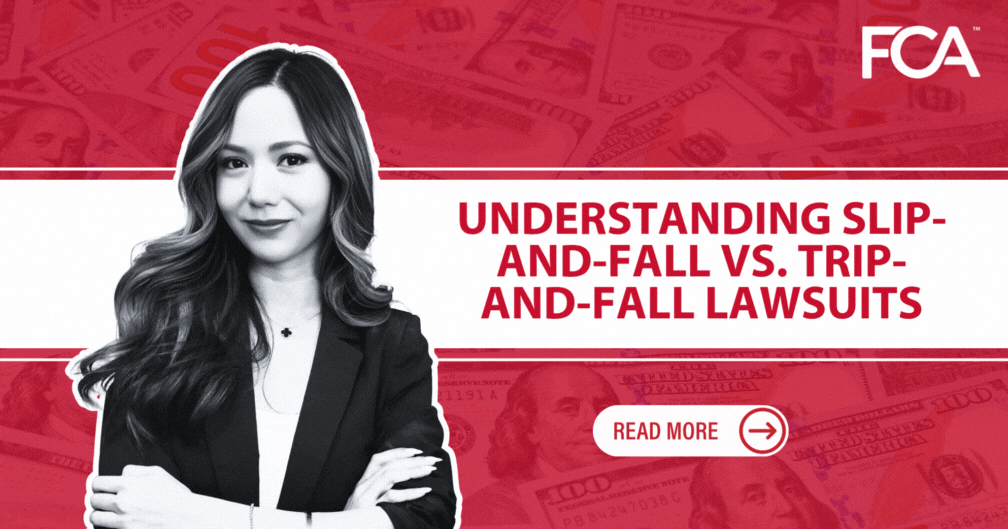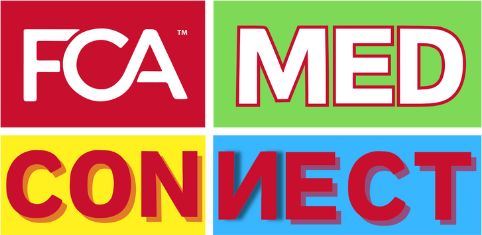
- Jane D
When representing injured clients in premises liability cases, it’s crucial to distinguish between slip-and-fall and trip-and-fall accidents. Though these terms are often used interchangeably in casual conversation, California law treats them distinctly–affecting how you build your case, establish liability, and ultimately recover damages.
For lawyers and legal teams, understanding these differences is essential not only for litigation strategy but also for helping clients access pre0settlement legal funding to cover living expenses while they await resolution.
Slip-and-Fall Accidents: Backward Falls on Dangerous Surfaces
A slip-and-fall occurs when someone loses footing on a slick or slippery surface, causing them to fall backward. Common scenarios include:
- Wet or freshly mopped store floors with no warning signs
- Spilled liquids in grocery aisles
- Icy sidewalks (where applicable in colder regions)
- Grease or oil on parking lots or garages
Typical injuries from backward falls include:
- Wrist and ankle fractures (from instinctively trying to break the fall)
- Back injuries and spinal strain
- Traumatic brain injuries (from hitting the head)
- Shoulder dislocations
Establishing liability often requires demonstrating that a property owner knew or should have known about the hazard but failed to address it or warn visitors.
Trip-and-Fall Accidents: Forward Falls from Unexpected Obstacles
A trip-and-fall incident occurs when a person catches their foot on an unexpected object or uneven surface, pitching them forward. Common causes include:
- Cracked or raised sidewalks
- Potholes in parking lots
- Loose floor mats or rugs
- Poorly maintained stairs
Forward falls can lead to injuries such as:
- Fractured hands or wrists
- Broken nose or facial lacerations
- Knee and leg fractures
- Neck strains
In these cases, attorneys need to document the hazard’s presence and prove that it posed an unreasonable risk to pedestrians.
Why This Distinction Matters in California
California premises liability claims hinges on demonstrating negligence. Bur proving negligence depends on the hazard type:
- Slip hazards often involve failure to clean or warn.
- Trip hazards often involve poor maintenance or design defects.
Knowing which category applies influences expert testimony, evidence collection (photos, maintenance logs), and liability apportionment—especially in shared-fault cases under California’s comparative negligence rules.
The Role of Legal Funding in Premises Liability Cases
These cases can take months or even years to settle or go to trial. Injured plaintiffs may be unable to work, facing medical bills and household expenses. Legal funding can be a lifeline.
Key benefits of lawsuit funding for slip-and-fall and trip-and-fall plaintiffs:
- Immediate cash advances to cover rent, utilities, and medical costs
- Non-recourse structure: repayment only if the case is successful
- Preserves client financial stability, reducing pressure to accept low settlements
For legal teams, offering clients access to funding options can strengthen attorney-client relationships and improve case outcomes by allowing time to negotiate fair settlements.
Key Takeaway
Distinguishing between slip-and-fall and trip-and-fall accidents is more than a semantic exercise—it’s a critical part of building a strong, well-supported premises liability case in California. Understanding the differences in causation, evidence requirements, and typical injury patterns helps legal teams hold negligent property owners accountable and secure fair compensation for injured clients.
For plaintiffs struggling with medical bills and lost wages during lengthy legal proceedings, access to reliable legal funding can make all the difference. By partnering with a trusted California-based legal funding company, attorneys can offer their clients the financial stability they need to stay the course and pursue the full value of their claim.
Ultimately, knowing the nuances of these cases—and supporting clients with the right resources—ensures justice isn’t just pursued, but achieved.
Who is Fund Capital America?
Since 2006, Fund Capital America (FCA) has been a trusted leader in pre-settlement funding, providing cash advance loans to plaintiffs in personal injury and accident cases. Over the years, FCA has proudly served thousands of law firms and tens of thousands of clients, helping them navigate the financial challenges of litigation. While our core service is pre-settlement funding, we also offer a comprehensive range of services to support law firms and their clients from the beginning of the case to the final settlement check distribution.
Fund Capital America’s Services
In addition to pre-settlement funding, FCA provides a broad array of services designed to alleviate the financial and administrative burdens on injury victims, law firms, and medical professionals. Our services include:
- Pre Settlement Funding
- Policy Limits
- Doctor & Medical Facility Directory
- Doctor & Medical Facility Scheduling
- Language Services
- Investigation Services
- Medical Legal Finance
- Surgery Funding
- Medical Lien Funding
- Law Firm Funding & Law Firm Banking Services
- Law Firm Line of Credit
- Medical Receivables Financing
- Law Firm Services
Get the Legal Funding Support You Need in Just 5 Minutes!
Here's how it works:
Fill out our application form: It takes just 5 minutes to provide the necessary details about your case.
Get prequalified: Our team will review your application and get back to you swiftly, often within hours.
Need assistance? Call us at the number provided for immediate support from our knowledgeable staff.
Don't let financial stress prevent you from focusing on your recovery. Apply now to secure your lawsuit cash advance!
